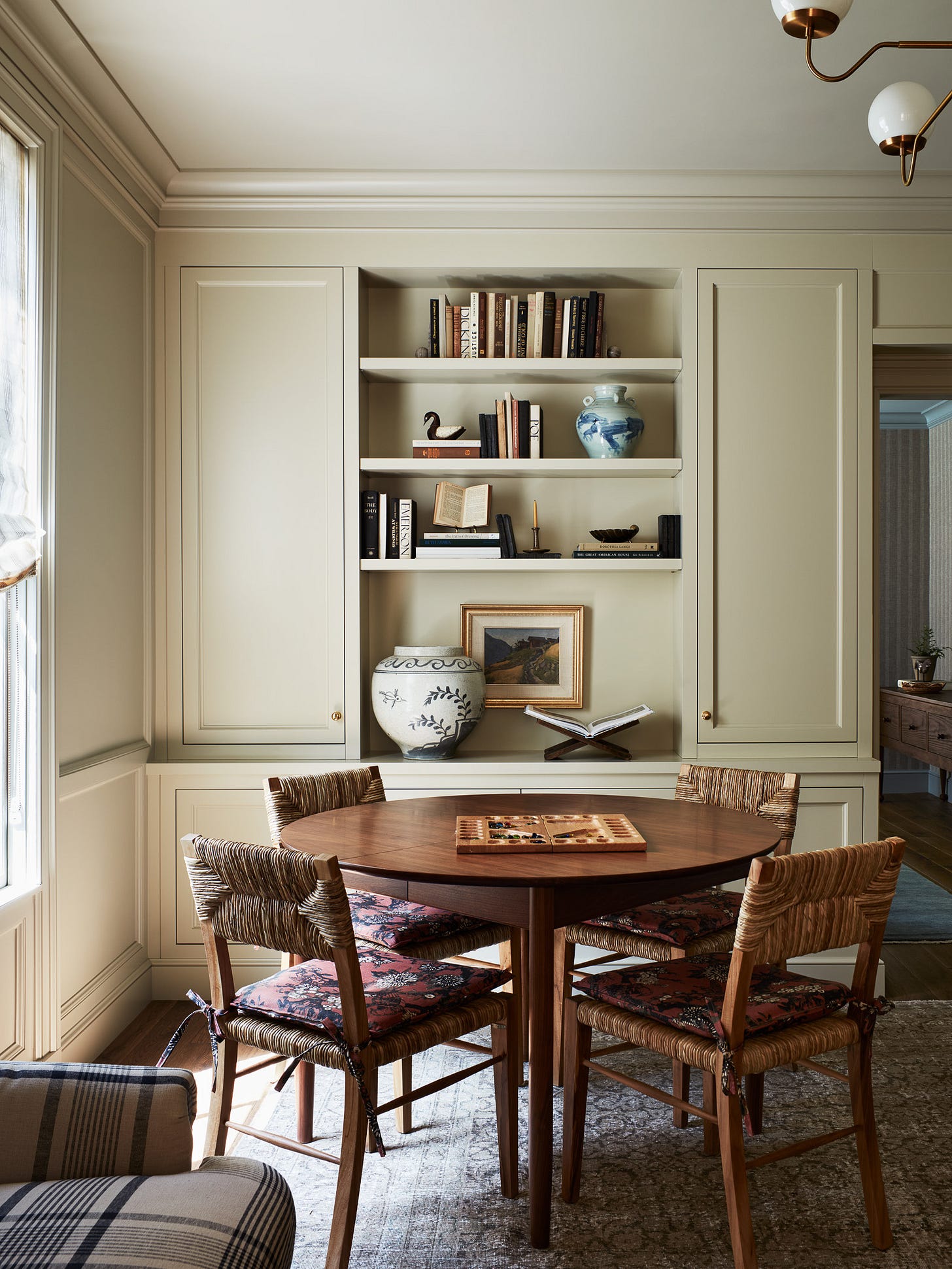The Art of Effortless Shelf Styling
simple tips & tricks to create a collected, curated look
Styling built-in shelves can be challenging, even for the most experienced designers. It often takes a process of trial and error to achieve the perfect balance. Even in my own home, I find myself constantly refreshing different shelves - whether I’m wanting to achieve a different vibe or to meet a new functional need. Today, I’m excited to share some of our go-to tips and tricks that help us at W Design to curate interesting styled shelves for our all of our design clients.
HOW TO START:
If you have the option to design your shelves (i.e., you aren’t working with existing ones), we find that having the ability to adjust the shelf heights = even if it’s only by a few inches up or down (or removing one altogether, like we did in the built-ins pictured above) - allows for greater creativity and flexibility when selecting items for the shelves.
The best way to start styling shelves is by removing everything from them.
Start with a clean slate: lay out your items and group them by type.
Every shelf we’ve styled always begins with books.
Speaking of books, you’ll need more than you think to create a full look. If you don’t already have an extensive collection, you can source vintage books online or browse your local thrift store for ones with beautiful spines in coordinating colors.
If it’s taking you a long time, don’t feel bad. That is the process. If you don’t like it, step away and come back to it with fresh eyes. Again, it’s trial and error.
THE POWER OF REPETITION:
When styling shelves with multiple columns and rows - or, as seen in the example below, multiple sets of bookshelves - we use repetition to create a cohesive and polished look.
On the left set of shelves, you'll notice that the top and bottom rows follow the same formula as those on the right. We find that these top and bottom shelves are the easiest to replicate since they’re not at eye level, making them ideal for repeating books or baskets.
From there, we apply the repetition rule more subtly throughout the other shelves. For example, placing a single pot on the same shelf on each side or dedicating a shelf to books on both sides without making them identical.
Be careful not to overdo it—the goal is to achieve balance, not a perfectly symmetrical, showroom-like display.

AVOID THIS COMMON MISTAKE:
While it may seem this next tip somewhat contradicts the first, it’s only because styling shelves is really just all a balancing act. One of the most common mistakes I see when people are struggling to nail the styling of their shelves is when they use objects that are too similar in height or scale. An interesting shelf usually has at least one thing that is taller than the rest. Finding objects that have varying height and scale can be tricky so here are some of our go to objects we source to achieve this:
Artwork and/or picture frames: We love to style shelves with artwork (we source this picture frame for almost every one of our clients because it stands fully upright on it’s own/doesn’t tilt back like a traditional photo frame). It’s an easy and interesting way to add height, personality, and a personal touch if you choose to fill it with family or travel photos.
Candlesticks: we love using vintage candlesticks for that height and variety in material - whether its a polished brass or vintage wood holder, they make a great accessory for a shelf.
Tall vases: specifically with interesting shapes, color, and/or texture. Vases take up a good amount of visual space without feeling square or blocky like books.
Baskets: we almost never style shelves without a basket or two. They take up space / add height and are super functional for storing away things you don’t necessarily want on display. Here are 4 baskets we tend to reach for again and again based on their size for open shelves: 1, 2, 3, 4.
Sculptural objects: we often search for vintage objects such as busts, or metal figurines to add an organic shape as well as height for a shelf.
Stacked decorative boxes: stacking boxes is another easy way to add height. However, keep in mind, this will not add any variety in shape since boxes take up similar visual space as books (which if you’re styling shelves, you will already be using). We would only use this trick once on a bookshelf to keep from looking too match-y.
Book holder: these are great to add alone on a shelf for when you’re looking to balance height with something long and low (see example in the image below).
Styling is an art, and sometimes it’s hard to put into words. Hopefully, at least one of these tips will help you tackle any styled-shelf challenges you face. If I missed something that you like to do when styling, I’d love to hear it in the comments below.







Thank you! Did you guys choose the paint colors in the Oak Hill Drive Library? Curious about them.